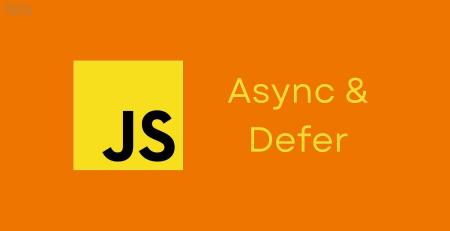Clean Code in C#: A Guide to Writing Elegant .NET Applications
In the field of software development, each developer should work to grasp the fundamental ability of writing code that is clear and simple to maintain. This is crucial for programming in C# and .NET, where well organized code may significantly improve program quality and long-term management. The ideas and best practices that can help you hone your coding abilities and write clean C# code will be covered in detail in this article.
Why Clean Code Matters
It goes beyond merely being aesthetically pleasing to write code that is simple to read, alter, and maintain. Clean code is important for the following reasons:
1. Readability: Clean code is easy to read and understand. Anyone looking at your code should be able to comprehend its purpose and functionality without struggling.
2. Maintainability: Clean code is easier to maintain. When you need to make changes or fix bugs, clean code minimizes the chances of introducing new issues.
3. Collaboration: Clean code promotes collaboration within development teams. It allows team members to work on the same codebase more effectively.
4. Efficiency: Clean code can lead to more efficient software. It reduces the chances of performance bottlenecks and unintended consequences.
Clean Code Principles
1. Meaningful Names
One of the most fundamental aspects of clean code is the use of meaningful and descriptive names for variables, functions, classes, and other elements. Choosing appropriate names is crucial for improving code readability and understanding.
Variables and Fields
When naming variables and fields, opt for names that clearly express their purpose. Avoid single-letter or ambiguous names that leave readers guessing. For example:
// Not clean int d; // What does 'd' represent? // Clean int daysSinceLastLogin; // Clearly indicates the purpose.
Functions and Methods
Similarly, meaningful names are vital for functions and methods. A well-named function provides a clear indication of its behavior or purpose:
// Not clean
public void XYZ() { ... }
// Clean
public void CalculateTotalPrice() { ... } // Clearly indicates the function's purpose.Classes and Types
When naming classes and types, strive for names that are descriptive and highlight their responsibility within the codebase:
// Not clean
public class Data { ... } // What kind of data does this class represent?
// Clean
public class CustomerData { ... } // Clearly indicates the type of data and its purpose.Constants
For constants, use uppercase letters and underscores to create self-explanatory names:
// Not clean const int pi = 3.14159; // Clean const double PI = 3.14159; // Uppercase and underscore make it clear this is a constant.
Enumerations
When defining enumerations, choose names that reflect the meaning of each value:
// Not clean
enum Status { A, B, C } // Unclear meaning of each value.
// Clean
enum OrderStatus { Pending, Shipped, Delivered } // Clearly indicates the meaning of each status.2. DRY (Don’t Repeat Yourself)
The DRY principle is a foundational tenet of clean code, underscoring the importance of eliminating code redundancy and ensuring that every piece of information or logic resides in a singular, unambiguous location within your codebase.
Replicating code can give rise to various issues, including increased maintenance efforts, heightened risk of introducing errors when modifications are necessary, and reduced code readability. Embracing the DRY concept empowers you to craft code that is not only more maintainable and efficient but also less prone to errors.
Identifying Code Duplication
Before addressing code duplication, you must be able to identify it. Here are some common signs of code duplication:
- Repeated Code Blocks: Identical or very similar code appearing in multiple places within your project.
- Copy-Pasting: Reusing code by copying and pasting it with minor modifications.
- Multiple Implementations: Writing the same logic in different functions, classes, or methods.
Strategies to Eliminate Code Duplication
- Create Functions and Methods: Encapsulate repeated code within functions or methods. This not only reduces duplication but also makes the code more modular and readable.
// Duplicated code
int total = x + y;
Console.WriteLine("Total: " + total);
// Eliminate duplication
void CalculateAndPrintTotal(int x, int y)
{
int total = x + y;
Console.WriteLine("Total: " + total);
}- Use Inheritance and Polymorphism: In object-oriented programming, leverage inheritance and polymorphism to create a common base class or interface that encapsulates shared behavior.
// Duplicated code in multiple classes
class Rectangle
{
public int CalculateArea() { ... }
}
class Circle
{
public int CalculateArea() { ... }
}
// Eliminate duplication using inheritance and polymorphism
abstract class Shape
{
public abstract int CalculateArea();
}
class Rectangle : Shape
{
public override int CalculateArea() { ... }
}
class Circle : Shape
{
public override int CalculateArea() { ... }
}- Extract Constants: When using magic numbers or strings in your code, extract them into constants to prevent duplication and make your code more self-documenting.
// Duplicated magic number
if (value < 42) { ... }
// Eliminate duplication by using a constant
const int MinThreshold = 42;
if (value < MinThreshold) { ... }- Use Libraries and Frameworks: Leverage existing libraries, frameworks, and standard libraries to avoid implementing common functionality from scratch.
- Refactor Smelly Code: When you encounter code smells like long methods or complex conditionals, these can often be indications of duplicated logic. Refactor such code to eliminate repetition.
Adhering to the DRY principle not only enhances code quality but also simplifies maintenance, improves code readability, and reduces the risk of introducing bugs due to inconsistent changes in duplicated code. By identifying and addressing code duplication, you’re well on your way to writing clean, efficient, and maintainable code.
3. Single Responsibility Principle (SRP)
One of the five SOLID principles of object-oriented programming is the single responsibility principle. According to it, there should only be one cause for a class to change. In other words, a class need to have just one clear-cut duty or goal. You can write cleaner, more maintainable, and more modular code by following this rule.
Benefits of SRP
- Improved Readability: A class with a single responsibility is easier to understand and work with.
- Ease of Maintenance: When a change is required, it’s less likely to impact other parts of the codebase, making maintenance more straightforward.
- Testability: Classes with a single responsibility are typically easier to test since their behavior is well-isolated.
Identifying Violations of SRP
To apply the Single Responsibility Principle effectively, you need to recognize when a class has multiple responsibilities. Some common signs of SRP violations include:
- Long Methods: If a method is excessively long and performs multiple distinct tasks, it may indicate a violation.
- High Cyclomatic Complexity: High complexity, measured by the number of branching points in a method, can be a sign of multiple responsibilities.
- Frequent Changes: If a class needs modifications for various, unrelated reasons, it likely has multiple responsibilities.
Applying SRP
To follow the Single Responsibility Principle, start by identifying the responsibilities of a class. Then, split the class into smaller, more focused classes, each with a single responsibility. Here’s an example of refactoring an SRP-violating class:
// Violation of SRP: This class handles both reading from a file and processing the data.
public class DataProcessor
{
public void ReadDataFromFile(string filename)
{
// Read data from the file.
}
public void ProcessData()
{
// Process the data.
}
}After applying SRP:
// Following SRP: The class for reading data from a file.
public class DataReader
{
public void ReadDataFromFile(string filename)
{
// Read data from the file.
}
}
// Following SRP: The class for processing data.
public class DataProcessor
{
public void ProcessData()
{
// Process the data.
}
}In this refactoring, the responsibilities are clearly separated into two classes: one for reading data from a file and another for processing the data. Each class now has a single responsibility.
The Single Responsibility Principle encourages you to create classes that are cohesive, focused, and easier to understand. By adhering to SRP, you’ll contribute to writing clean code that is more maintainable and extensible.
4. Keep Functions and Methods Small
Keeping functions and methods small is a core principle of clean code development. In this article, we will explore why small functions and methods are essential for clean code, and we’ll provide practical examples in C# to illustrate the significance of this principle.
The Importance of Small Functions and Methods
Small functions and methods are integral to clean code for several reasons:
1. Readability
- Small functions are more readable. When a function is concise and focused on a single task, it is easier for anyone reading the code to understand what it does.
2. Maintainability
- Smaller functions are easier to maintain. When a change is required, you don’t need to comprehend the entire function; you can focus on the specific part related to the change.
3. Reusability
- Smaller functions are more reusable. They can be used in different contexts because they perform specific, well-defined tasks.
4. Testing
- Small functions are more testable. When functions have a single responsibility, it’s easier to write unit tests that cover specific cases and behaviors.
5. Debugging
- Debugging is simpler with smaller functions. When an issue arises, you can quickly pinpoint the function or method responsible, making debugging less time-consuming.
6. Encapsulation
- Smaller functions naturally follow the principle of encapsulation, isolating a specific piece of functionality. This can lead to better code organization.
How to Keep Functions and Methods Small
To keep functions and methods small, consider the following practices:
1. Single Responsibility
- Each function or method should have a single responsibility. If you find a function doing too much, break it into smaller functions that handle specific tasks.
2. Descriptive Names
- Give your functions and methods descriptive names that clearly indicate their purpose. A well-named function often obviates the need for comments.
3. Limit Line Count
- A rule of thumb is to keep functions and methods around 10-20 lines of code. If a function is significantly longer, consider whether it can be broken down.
4. Nested Functions
- Consider using nested functions when it makes sense. This can help organize code and keep related functionality together.
5. Use Helper Functions
- Create small helper functions to encapsulate common or repeated logic. This promotes code reuse and reduces duplication.
6. Review and Refactor
- Regularly review your code and refactor functions that have grown too large. Refactoring is an essential part of maintaining clean code.
Code Formatting in C#
Let’s illustrate the concept of keeping functions and methods small with a C# example:
// Unoptimized, long method
public double CalculateTotalPrice(int quantity, double unitPrice, double discount)
{
double total = quantity * unitPrice;
if (discount > 0)
{
total -= total * discount;
}
return total;
}In this unoptimized method, multiple responsibilities are bundled into a single function, making it challenging to understand and maintain.
Now, let’s create smaller, more focused functions:
public double CalculateTotalPrice(int quantity, double unitPrice, double discount)
{
double total = CalculateSubtotal(quantity, unitPrice);
return ApplyDiscount(total, discount);
}
private double CalculateSubtotal(int quantity, double unitPrice)
{
return quantity * unitPrice;
}
private double ApplyDiscount(double total, double discount)
{
if (discount > 0)
{
total -= total * discount;
}
return total;
}In this refactoring, we’ve divided the functionality into smaller functions, each with a single responsibility. This results in cleaner, more maintainable code that adheres to the principle of keeping functions and methods small.
5. Comments and Documentation
Through improved readability, maintainability, and developer cooperation, comments and documentation are essential components of clean code. However, it’s crucial to employ them wisely and successfully. Here’s how documentation and comments support clean code:
1. Explain the ‘Why,’ Not the ‘What’
- Comments should explain the “why” behind a particular piece of code, not just restate the obvious “what.” Well-written code should already make the “what” evident.
For example, instead of:
// Increment 'counter' by 1 counter += 1; Provide context: // We increment 'counter' to track the number of processed items in our loop. counter += 1;
2. Clarify Complex Logic
Comments are valuable when dealing with complex or non-obvious logic. They can help developers understand the intricacies of an algorithm or decision-making process.
For instance:
// Apply a binary search algorithm to find the target value within the sorted array. int result = BinarySearch(array, target);
3. API Documentation
- Public-facing APIs, libraries, and interfaces should have comprehensive documentation. This documentation should describe the purpose of each function, its parameters, return values, and usage examples.
4. Coding Standards and Conventions
Comments can also be used to document coding standards and conventions within the codebase. This is especially helpful when there are specific guidelines that developers should follow.
Example:
// Ensure that all public methods are properly documented with XML comments.
5. TODOs and FIXMEs
Comments can serve as reminders for tasks that need attention, such as unfinished features, known issues, or technical debt. However, it’s important to address these comments promptly.
Use “TODO” for future work:
// TODO: Implement error handling for this function.
Use “FIXME” for known issues:
// FIXME: This algorithm can lead to incorrect results in edge cases.
6. Documentation Comments
In some programming languages, such as C#, you can use XML documentation comments to generate external documentation, providing valuable insights for users of your code.
Example:
/// <summary>
/// Calculates the area of a rectangle.
/// </summary>
///<param name="length">The length of the rectangle.</param>
/// <param name="width">The width of the rectangle.</param>
/// <returns>The calculated area.</returns>
public double CalculateRectangleArea(double length, double width)
{
return length * width;
}7. Review and Update Comments
- Ensure that comments remain accurate and up to date. Outdated comments can mislead developers and result in misunderstandings.
- As part of code reviews and maintenance, review and update comments when necessary.
The key to clean code comments and documentation is balance. While comments are valuable for clarity and context, the best code is self-explanatory through its structure and naming. Therefore, aim to write code that doesn’t rely on comments to convey its meaning, but use comments judiciously to provide valuable insights that enhance understanding, collaboration, and maintainability.
6. Test-Driven Development (TDD)
The TDD Process
TDD follows a simple, iterative process consisting of three main steps: Red, Green, and Refactor:
- Red: Write a failing test. This test should define the expected behavior of the code you’re about to write. The test should not pass initially, as there’s no code to satisfy it yet.
- Green: Write the minimum amount of code necessary to make the test pass. This code may not be perfect or efficient, but it should make the test pass.
- Refactor: After the test passes, refactor your code to make it clean, efficient, and maintainable while ensuring the test continues to pass. Refactoring is key to clean code.
Let’s illustrate the TDD process with a simple C# example.
Example: TDD in C# – Implementing a Stack
Suppose we want to implement a basic stack data structure in C#. We’ll follow the TDD process:
1. Red: Write a Failing Test
[Test]
public void Push_Pop_Should_Return_Last_Pushed_Item()
{
Stack<int> stack = new Stack<int>();
stack.Push(42);
int popped = stack.Pop();
Assert.AreEqual(42, popped);
}In this initial test, we define the behavior we want to achieve: pushing an item onto the stack and popping it to get the last pushed item. This test will fail because we haven’t implemented the Push and Pop methods yet.
2. Green: Make the Test Pass
Now, we implement the minimum code necessary to make the test pass:
public class Stack<T>
{
private List<T> items = new List<T>();
public void Push(T item)
{
items.Add(item);
}
public T Pop()
{
if (items.Count == 0)
throw new InvalidOperationException("Stack is empty");
T result = items[items.Count - 1];
items.RemoveAt(items.Count - 1);
return result;
}
}With this implementation, the test will pass, but the code is not necessarily clean or optimized.
3. Refactor: Make the Code Clean
Now, we refactor the code to make it cleaner, more efficient, and maintainable:
public class Stack<T>
{
private List<T> items = new List<T>();
public void Push(T item)
{
items.Add(item);
}
public T Pop()
{
if (items.Count == 0)
throw new InvalidOperationException("Stack is empty");
T result = items[items.Count - 1];
items.RemoveAt(items.Count - 1);
return result;
}
}The refactored code doesn’t change the functionality but may include improvements in naming, comments, or efficiency.
7. Consistent Formatting
The Role of Consistent Formatting
Consistent formatting is not just about aesthetics; it serves several vital purposes in clean code development:
- Readability: Code is read more often than it’s written. Consistent formatting ensures that anyone reading the code can understand it quickly, regardless of the author.
- Maintainability: A standardized code structure makes it easier to find, update, or fix issues in the codebase. When formatting is consistent, changes are less likely to introduce errors or inconsistencies.
- Collaboration: In a team environment, consistent formatting creates a shared understanding of how the code should look. This reduces disagreements and increases team efficiency.
- Version Control: Consistent formatting helps version control systems, such as Git, to highlight meaningful code changes and avoid noise in commit histories.
Consistent Formatting Practices
Here are some common formatting practices that contribute to clean code:
1. Indentation and Spacing
- Use a consistent and agreed-upon number of spaces or tabs for indentation (e.g., four spaces). Choose one and stick with it throughout the project.
- Maintain consistent spacing around operators and brackets, such as
if (condition)rather thanif(condition).
2. Brace Placement
Choose a style for brace placement (e.g., K&R, Allman, or Stroustrup) and ensure that it’s followed consistently across the codebase.
Example (K&R style):
if (condition)
{
// Code
}3. Naming Conventions
Adhere to naming conventions for variables, methods, classes, and other identifiers. In C#, use PascalCase for class names and camelCase for method and variable names.
Example:
public class MyClassName
{
public void MyMethodName()
{
int myVariableName = 42;
}
}4. Line Length
Limit the line length to a reasonable number of characters (e.g., 80-120 characters) to prevent horizontal scrolling. If a line is too long, break it into multiple lines for readability.
Example:
// Acceptable
string message = "This is a long string that needs to be wrapped to improve readability. "
+ "It's essential to keep lines at a reasonable length.";
// Improved
string message = "This is a long string that needs to be wrapped to improve readability. ";
message += "It's essential to keep lines at a reasonable length.";
5. Consistent Commenting and Documentation
Use consistent commenting styles, such as double slashes for single-line comments and XML documentation comments for documenting methods and classes.
Example:
// Single-line comment
/// <summary>
/// This is a method description.
/// </summary>
public void MyMethod()
{
// Code
}Code Formatting in C
Let’s apply the concept of consistent formatting to a C# code example:
public class ExampleClass
{
public int Add(int a, int b)
{
if (a > 0)
{
return a + b;
}
else
{
return b;
}
}
}In this example, we see consistent formatting practices:
- Indentation is used with four spaces.
- Braces are placed using the K&R style.
- Naming follows C# conventions (PascalCase for class and method names, camelCase for variables).
- Comments are consistent with double slashes for single-line comments and XML documentation for the method.
8. Version Control and Frequent Commits
The Role of Version Control Systems
Version control systems (VCS), such as Git, are essential tools in modern software development. They offer the following advantages for clean code development:
1. Code History and Accountability
- Version control systems maintain a detailed history of code changes. This historical record is essential for tracking when and why specific changes were made, providing accountability and transparency in collaborative development.
2. Collaboration and Teamwork
- VCS enables multiple developers to work on the same project simultaneously. It allows for seamless collaboration, code integration, and conflict resolution.
3. Branching and Isolation
- Branching in version control systems allows developers to work on features, bug fixes, or experiments in isolation. This isolation prevents untested or incomplete code from affecting the main codebase, ensuring that clean code is maintained.
4. Rollback and Recovery
- If issues arise in the code, version control systems offer the ability to roll back to previous, known-good versions. This ensures that clean code can be restored in the event of unexpected problems.
5. Documentation and Commit Messages
- Developers are encouraged to write meaningful commit messages, describing the purpose of each change. These messages serve as documentation for code changes and their significance.
The Role of Frequent Commits
Frequent commits within a version control system are equally vital for clean code development:
1. Granularity and Modularity
- Frequent commits encourage developers to make smaller, incremental changes to the code. This practice promotes modularity and ensures that each change focuses on a specific task or feature.
2. Reducing Risk
- Smaller, frequent commits reduce the risk of introducing errors. By addressing issues incrementally and running tests after each commit, it’s easier to identify and correct problems before they compound.
3. Clean History
- Frequent commits result in a cleaner version history. Each commit should represent a logical, complete unit of work, making it easier to understand the evolution of the codebase.
4. Improved Collaboration
- Frequent commits enhance collaboration by allowing team members to review changes continuously. This ongoing review ensures that code adheres to clean code principles and coding standards.
C# Example: Leveraging Version Control and Frequent Commits
Consider a C# project where multiple developers are collaborating. Frequent commits and version control are pivotal in maintaining clean code:
- Version Control Setup: Initialize a Git repository for your C# project.
- Branching: Create feature branches for different tasks or features. For instance, you might have branches for “user-authentication,” “bug-fixes,” and “frontend-refactor.”
- Frequent Commits: In each branch, make frequent commits as you work on specific tasks. Commit when you complete a feature, fix a bug, or reach a significant milestone.
- Meaningful Commit Messages: Write meaningful commit messages that describe what the commit accomplishes. For example:
git commit -m "Implement user registration feature"
- Merge and Review: Merge your feature branches into the main branch (e.g., “master”) regularly. Conduct code reviews to ensure that clean code principles are followed.
By using version control and making frequent commits, you ensure that clean code practices are integrated into the development process, preventing codebase deterioration and fostering collaboration among developers.











Comment (1)
You’re in point of fact a good webmaster. The website loading velocity is amazing. It seems that you’re doing any distinctive trick. In addition, The contents are masterpiece. you’ve done a great activity on this subject!